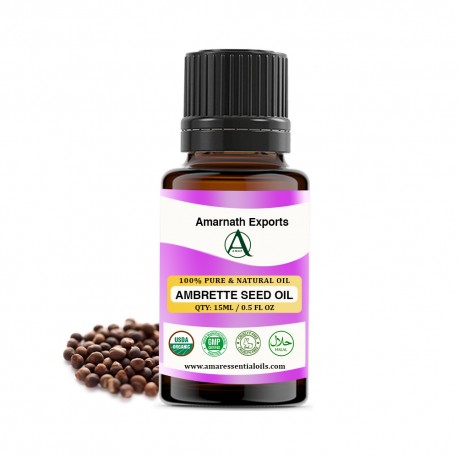No products
Product successfully added to your shopping cart
There are 0 items in your cart. There is 1 item in your cart.
Ambrette Seed Oil
New
Ambrette seed oil finds its roots in tropical regions, primarily India, where the Abelmoschus moschatus plant thrives. The oil extraction process involves crushing the seeds and distilling them to capture their essence, resulting in a fragrant and potent oil.
343 Items
More info
- Botanical Name: Abelmoschus moschatus Medik
- Family: Malvaceae
- Parts Used: Fully ripened seeds
- CAS#: 8015-62-1
- Extraction Method: Steam Distillation
- Appearance: Pale yellow-red liquid
- Aroma: Sweet, rich, floral musky
- Perfume note: Base
- Consistancy: Light
- Strength of Initial Aroma: High
- Blends well with: Amyris, bergamot, carrot seed, cedarwood, frankincense, galbanum, balsam, juniper berry, lavender, mandarin, myrrh, orange, patchouli, peppermint
But Ambrette seed oil | Abelmoschus moschatus Medik
The journey of ambrette seed oil begins with the hibiscus plant, which is native to tropical regions such as India, Egypt, and Indonesia. The seeds of this plant are carefully harvested and undergo a meticulous extraction process to obtain the precious oil. The seeds are crushed and cold-pressed to preserve their potent properties, resulting in a pure and aromatic oil that captivates the senses.
Aromatherapy
One of the most notable uses of ambrette seed oil is in the field of aromatherapy and perfumery. With its distinctive musky aroma and floral undertones, this oil serves as a valuable ingredient in creating luxurious perfumes and fragrances. Its complex scent profile adds depth and sophistication to countless fragrance compositions, making it a prized asset in the fragrance industry.
Skincare and Cosmetics
In addition to its aromatic allure, ambrette seed oil boasts a myriad of skincare benefits. Rich in antioxidants and essential fatty acids, this oil nourishes the skin and helps combat signs of aging and environmental stressors. Its lightweight and non-greasy texture make it ideal for use in facial serums, moisturizers, and beauty oils, providing hydration and revitalization for all skin types.
Fragrance and Perfumery Industry
The warm, musky, and floral aroma of ambrette seed oil renders it a sought-after addition to perfumes and related fragrance products. Its warm and musky tones evoke similarities to natural musk, while the floral hints impart a delicate sweetness to the olfactory experience. Characterized by its intricate fragrance profile, ambrette seed oil also carries woody and earthy undertones that harmonize with its warm and musky essence. Its distinct scent profile positions ambrette seed oil as a common choice for serving as a foundational or stabilizing element in perfumery, aiding in the preservation and extension of other fragrance components. Overall, the versatile and distinctive fragrance of ambrette seed oil lends itself as a valuable asset to the perfume industry.
In perfumery, ambrette seed oil functions as a fixative, enhancing the longevity of fragrances by 24 to 48 hours. Its fixative properties work to retard the evaporation rate of volatile fragrance molecules present in perfumes or fragrance formulations. Consequently, this enables the fragrance to linger for extended periods on the skin or adhere more tenaciously to clothing, ensuring a sustained and noticeable scent.
Moreover, the inherent fragrance of ambrette seed oil contributes depth and intricacy to perfume compositions and fragrance blends. Often employed as a base note, this oil establishes a warm and musky foundation upon which other fragrance accords can be layered. Consequently, ambrette seed oil emerges as an indispensable component in the creation of perfumes characterized by complexity and enduring allure.
Traditional medicine
Reviews
No customer comments for the moment.








